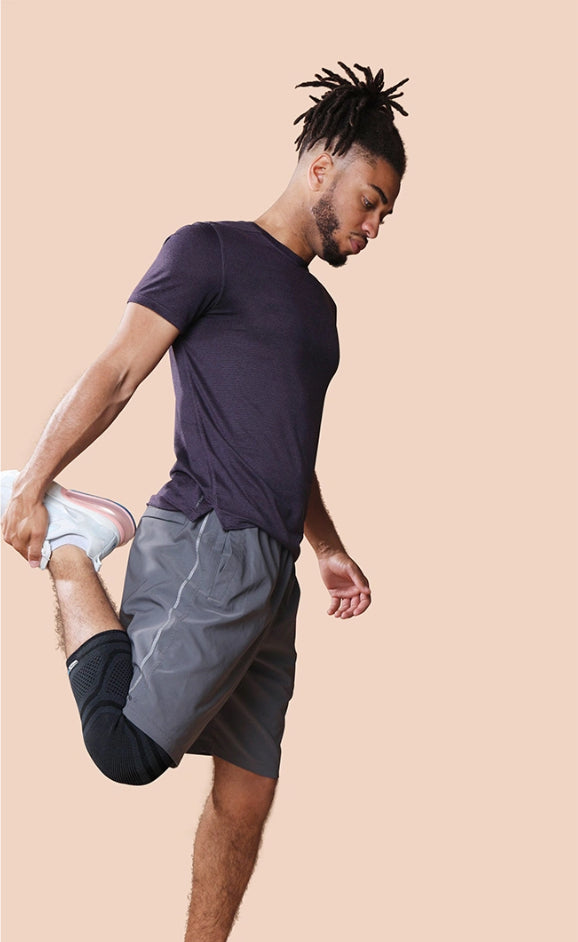
Achilles tendonitis is a common concern, especially among athletes and individuals leading active lifestyles. This condition, characterized by pain and inflammation in the Achilles tendon, can significantly impact mobility and quality of life.
While there are various approaches to managing this condition, one supportive measure that has gained attention is the use of compression socks. It's important to understand, however, that compression socks are not a cure for Achilles tendonitis.
Instead, they serve as a supplementary tool to help manage symptoms and support recovery. This article delves into the nature of Achilles tendonitis and explores how compression socks can play a role in a comprehensive management plan.
What Is Achilles Tendonitis?
Achilles tendonitis is an overuse injury characterized by inflammation and pain in the Achilles tendon, the band of tissue connecting calf muscles to the heel bone. It commonly affects runners and athletes who suddenly increase the intensity or duration of their workouts.
However, it's not limited to athletes. Anyone can develop Achilles tendonitis, particularly those with tight calf muscles or abnormal foot structures.
Symptoms
Symptoms typically include pain and stiffness along the Achilles tendon, especially in the morning or after periods of rest. The area may become tender, swollen, and warm to the touch. In chronic cases, the tendon may thicken, and nodules can form.
Causes
Understanding the causes is crucial for effective management. Achilles tendonitis often results from repetitive stress to the tendon, insufficient stretching, or a sudden increase in physical activity. Other factors include poor footwear, misalignment in the feet or legs, and aging, which can reduce tendon elasticity.
Impact
The impact of Achilles tendonitis extends beyond physical discomfort. It can hinder daily activities, affect athletic performance, and lead to long-term complications if not properly managed. Treatment typically involves rest, ice, stretching exercises, and, in some cases, medications or physical therapy.
How Can Compression Socks Support Achilles Tendonitis Management?
Compression socks are designed to provide consistent pressure to the legs and ankles, which can be beneficial for individuals with Achilles tendonitis. That said, how exactly do they support this condition?
Firstly, compression socks can help soothe swelling in the affected area. By applying gentle pressure, they support the movement of fluid away from the inflammation site. This can maintain comfort and recovery.
Additionally, the pressure from compression socks can support blood circulation in the lower extremities. Healthy blood flow means more oxygen and nutrients are delivered to the injured tissues, aiding healing and recovery.
It's important to note that while compression socks can offer these supportive benefits, they should be used as part of a broader management strategy. This strategy might include rest, stretching exercises, appropriate footwear, and potentially other medical interventions as advised by healthcare professionals.
What Factors Should You Consider When Choosing Compression Socks for Achilles Tendonitis?
Selecting the right compression socks for Achilles tendonitis involves several key considerations to ensure effectiveness and comfort.
Level of Compression
The primary factor is the level of compression. Compression socks come in different grades, typically measured in millimeters of mercury (mmHg). For Achilles tendonitis, a moderate compression level, usually between 15 and 30 mmHg, is often recommended. This range provides sufficient support to the Achilles tendon and calf muscles without being excessively tight.
Length
Thelength of the compression socks is also crucial. Ideally, socks that cover the calf muscle and extend down to the ankle or even the foot are beneficial, as they provide support to the entire affected area. Knee-high compression socks are usually a good choice, offering adequate coverage and support for the Achilles tendon.
Material and Fit
Material and fit are equally important. Look for socks made from breathable, moisture-wicking fabrics to ensure comfort, especially during extended wear or physical activity.
The socks should fit snugly but comfortably without slipping down or feeling overly restrictive. It's essential to choose the right size to avoid discomfort and to ensure the socks can deliver the intended level of compression.
Personal Preferences
Finally, consider your lifestyle and activity level. Athletes might prefer compression socks designed for athletic use, which can offer additional features like extra cushioning or specific designs for running or other sports.
Personal preferences in terms of style and color may also play a role in your selection, especially if you'll be wearing the socks frequently.
How Can You Integrate Compression Socks Into Your Achilles Tendonitis Management Plan?
Incorporating compression socks into a management plan for Achilles tendonitis should be done thoughtfully to maximize their supportive benefits. Start by gradually introducing compression socks into your daily routine. If you're new to using them, begin by wearing them for a few hours each day, gradually increasing the duration as you become more comfortable.
Timing can be important in managing symptoms. Consider wearing compression socks during periods of prolonged standing, walking, or during workouts, as these are times when the Achilles tendon may be under more strain.
What Are Other Strategies for Your Achilles Tendonitis Management Plan?
In addition to wearing compression socks, it's essential to use other management strategies for Achilles tendonitis.
Regular stretching exercises, particularly for the calf muscles, can significantly help. Gentle stretching helps alleviate tension in the Achilles tendon and can prevent further strain. It's important to perform these stretches consistently and with proper technique.
Icing the affected area can also be beneficial, especially after activity or at the end of the day. Cold therapy helps reduce inflammation and alleviate pain. Applying ice for 15 to 20 minutes a few times a day during acute flare-ups can provide relief.
For some individuals, custom orthotics might be necessary." so that it reads, "For some individuals, custom orthotic insoles might be necessary
Modifying exercise routines to avoid activities that exacerbate the condition is advisable. Low-impact activities like swimming or cycling can be good alternatives to high-impact sports during recovery periods.
Regular consultation with a healthcare provider is crucial. They can offer guidance on the optimal use of compression socks as part of your overall treatment plan and make adjustments based on your progress and feedback.
Wrapping Up
Managing Achilles tendonitis effectively requires a multifaceted approach. While compression socks serve as a valuable supportive tool, supporting blood flow and soothing discomfort, they are most effective when used in conjunction with other strategies.
Regular stretching, cold therapy, appropriate footwear, and exercise modification all play crucial roles in managing this condition. It's essential to listen to your body and adjust activities as needed to avoid aggravating the tendon.
Consulting healthcare professionals for personalized advice and following a comprehensive management plan can lead to more effective management of Achilles tendonitis, enabling individuals to continue leading active, fulfilling lives.
Remember, the journey to recovery is gradual, and incorporating a combination of supportive measures can significantly aid in this process.
Sources:
Achilles tendinitis - Symptoms & causes | Mayo Clinic
Achilles Tendinitis | Ortho Info
Stretching for prevention of Achilles tendon injuries: a review of the literature | NIH





